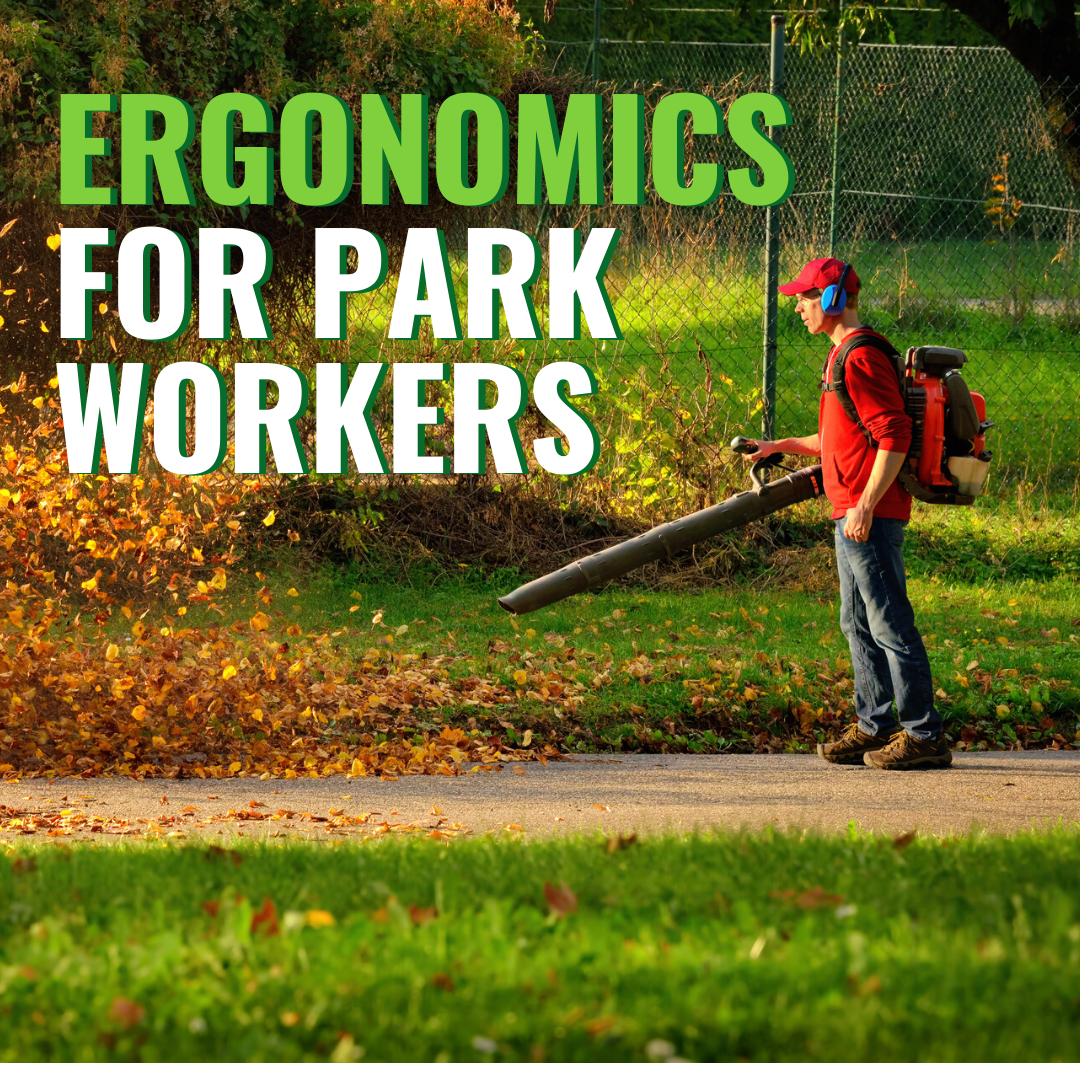We use cookies to make your experience better. To comply with the new e-Privacy directive, we need to ask for your consent to set the cookies. Learn more.
Ergonomics for Park Workers
July is the National Recreation and Park Association’s Park and Recreation Month, and while this year’s theme — We Are Parks and Recreation — celebrates the professionals who allow visitors to enjoy local parks, it’s also a great time to focus on safety. 
Park laborers are crucial to the function, beauty, and success of parks of all sizes. Whether you operate a small municipal greenspace or a multi-acre nature preserve, the labor force will be responsible for eliminating weeds, maintaining flower beds, and removing the waste visitors inevitably leave behind.
While performing these tasks, laborers face notable ergonomic hazards. Even an action as simple as bending and rising from a seated position places stress on bones, joints, and muscles over the course of a long, hot shift. In addition, lifting heavy loads, or repeated, awkward motions (think digging ditches) are associated with injuries in the back, hands, and knees.
Here are a few ergonomic interventions that can help avoid injuries for park laborers:
- Provide training on safe body movements for common tasks. For instance, most untrained workers twist at the torso to empty shovelfuls of dirt. The safer approach, according to California’s Division of Occupational Safety and Health, is to turn the forward foot, pivoting the entire upper body to empty shovels.
- Modify existing hand tools to reduce the strain. Handles make more difference than you might think. Tools with shorter, narrower handles place greater pressure on the sensitive nerves of the hand. Try replacing original grips with longer, thicker handles that spread pressure out over a larger portion of the hand, limiting the strain.
- Rotate workers among jobs. Repetition makes every risky task worse. Continually bending, or even simply holding the same awkward posture for long stretches, can quickly lead to musculoskeletal injury. Reduce the risk by having workers cycle through a number of tasks to switch things up during the shift.
- Introduce automated material handling equipment to replace hazardous tasks. The most effective way to prevent musculoskeletal disorders is to remove hazards in the first place. Bin Dumpers for emptying trash bins; Utility & Service Carts for transporting landscaping supplies; where there’s a need for material handling among park workers, Solus Group has the solution.
Among the physically risky tasks park workers engage in, waste-handling might be the worst. Every step of the process involves ergonomically challenging bending, twisting, and lifting, and the work is repetitive by nature.
The Turnkey Waste Handling Solution from Solus Group reduces injuries and improves productivity in large-scale spaces, both indoors and out. The Solution begins with a tugger train, consisting of a sit-down tugger vehicle or a Nu-Star Power Pusher, one or more Mobile Garbage Bins, and a Dumpmaster Bin Dumper.
A single worker can pilot this train across the grounds, stopping at Cascade Icon Roll-Out Carts, which are primary waste-collection points. There, the Dumpmaster quickly empties Roll-Out Carts into Mobile Garbage Bins without ergonomic risk. Finally, once the Bins are full, the user drives the train to the dumpster, where a MegaDumper stands ready to empty full bins. This process makes waste-handling at events and facilities faster, more efficient, and significantly safer — and it only takes one employee to handle high-capacity waste management.
This is just one example of how we can improve safety for park workers, but it’s a great place to start. This Park and Recreation Month, consider how you can improve safety for guests and the park workforce alike.
References:
“Ergonomic Survival Guide for Laborers.” DIR.CA. California Division of Occupational Safety and Health (Cal/OSHA), n.d. PDF. 28 Jun. 2019.
“Park and Recreation Month.” NRPA. National
